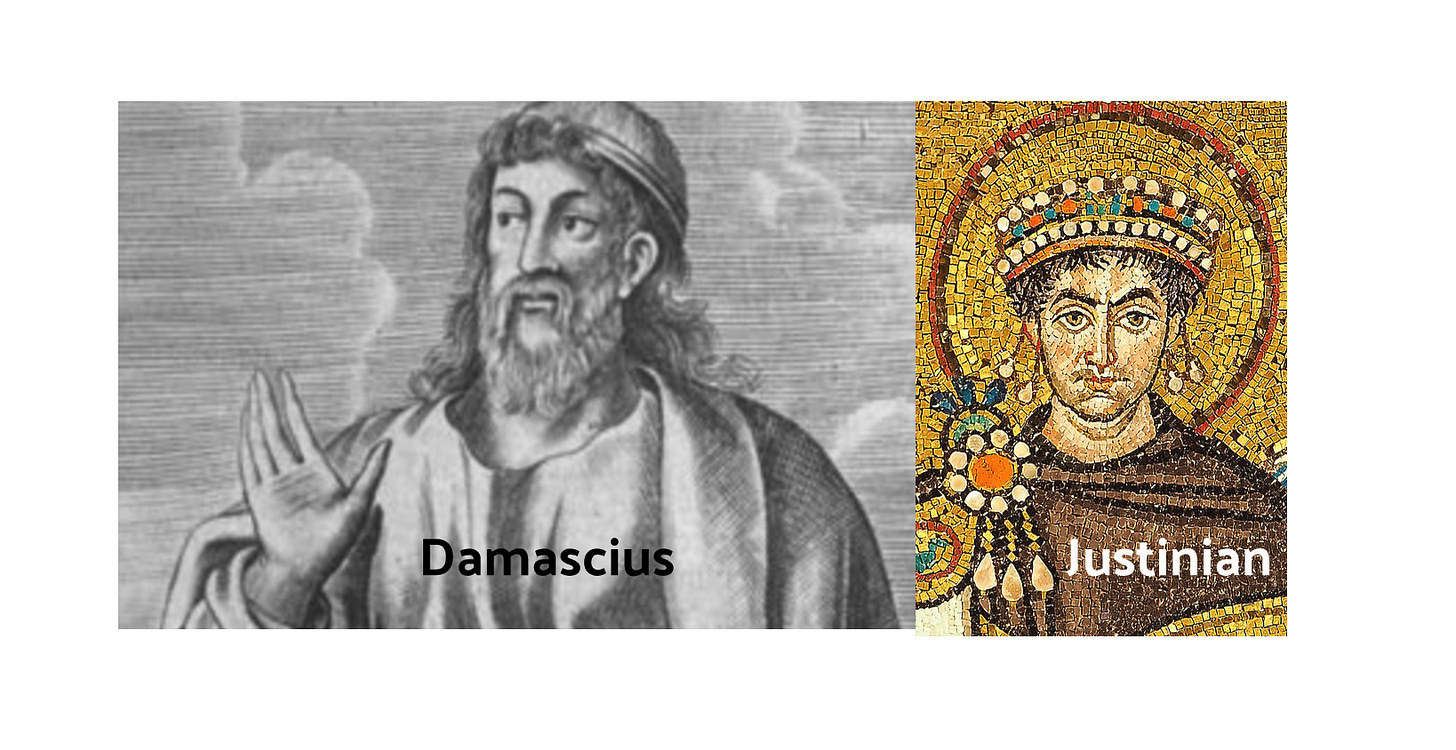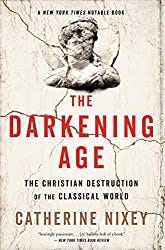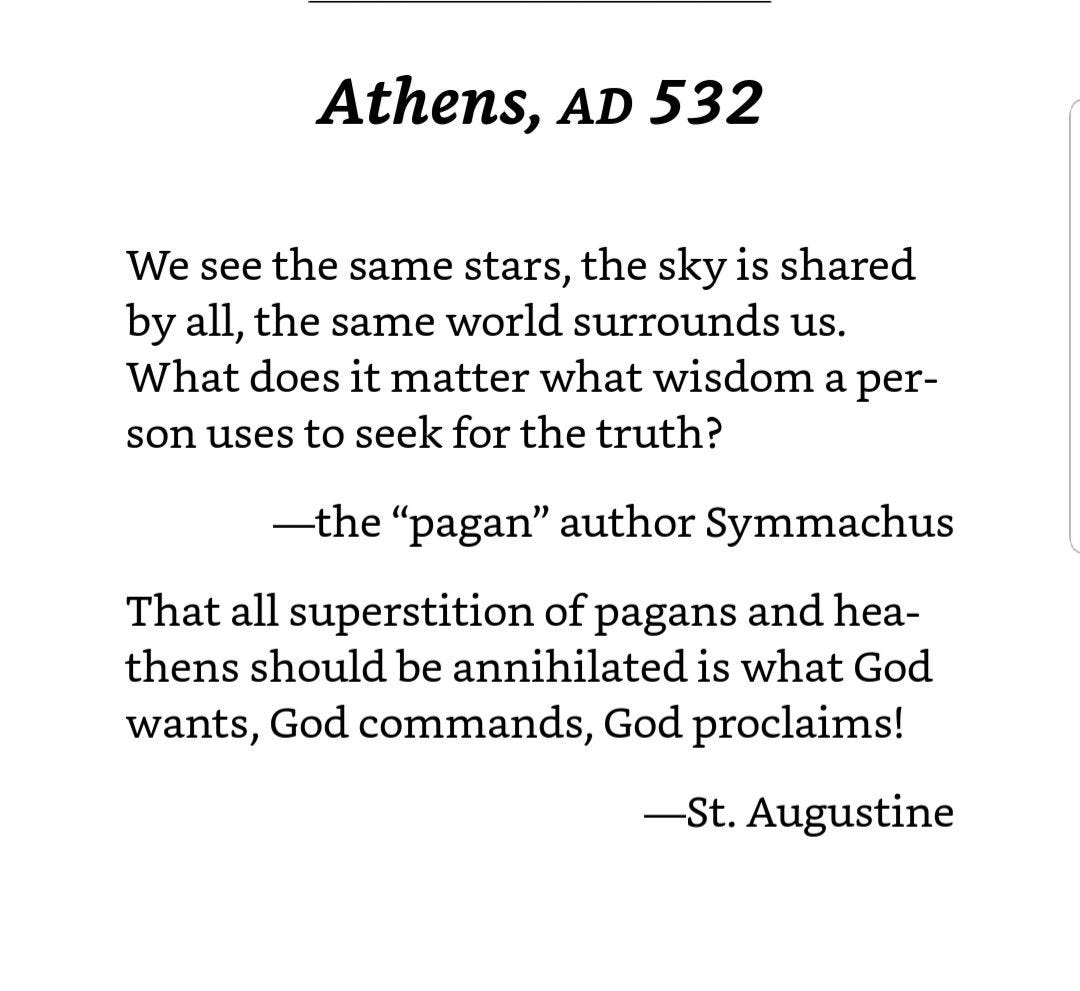How Christianity Destroyed the Greek Way of Life and Lessons for India

In the year AD 532, Damascius left Athens along with seven other philosophers from the most celebrated of the Greek schools – the Academy. These wise men traced their lineage to the illustrious Plato himself.
Brilliant, ruthless, stern and intelligent Damascius was all but 70 years old as he led the group to the world unknown outside of the Roman Empire.
“Men tend to bestow the name of virtue on a life of inactivity. But I do not agree.. the learned who sit in their corner and philosophize at length in a grand manner about justice and moderation, utterly disgrace themselves if they are compelled to take some action, “ he would say. An attitude that was needed at that time.
For, in those days, the Christian emperor Justinian I (also known ironically as “Justinian the Great” and even Saint Justinian!!) ruled. And he was a wretched tyrant who destroyed more of the Greek art, science, and culture than anyone in history!
His soldiers would enter homes of people to search for books and artifacts that were religiously blasphemous. If found, they would be burned and destroyed in public squares.
Temples across the Roman empire were being broken down and torn apart. The statues were smashed and treasures were melted.
Christian preachers were teaching their congregations to “hunt down sinners and drive them into the way of salvation as relentlessly as a hunter pursues his prey into nets”.
The tyranny was of none other than the disease called Christianity!
Liberties were gone. Temples destroyed. Books burnt. Philosophers and learned killed.
As Damascius lamented about how their collective way of life was being “swept away by the torrent.”
This is the time that the modern historians characterize as the “triumph of Christianity”. What they do not say is that triumph wasnot just a victory, but a complete annihilation of the target – the Pagans.
Catherine Nixey digs whatever evidence that remains to paint the picture of how the terrible and dark force of Christianity destroyed the pagan and native culture of Europe in just a few centuries in the most brutal ways. Ways which left nothing intact. The sculptures, the art, the writings, the wisdom, the temples – nothing was allowed to survive! In her book The Darkening Age: The Christian Destruction of the Classical World she shares details that have hitherto not been shared otherwise.
Carefully read these two quotes – one illustrating the Pagan mindset about the Christians and the other displaying the sinister mind of a Christian “Saint” about the pagans. Do they look familiar to you? Has anything changed since 532 AD?
More importantly, please do remember how the Christian literature and Church describes the Pagans. As vile, evil people whose only expression of religion was animal and human sacrifices. That is how Pagans have always been depicted. One reading of the quote above and you can see how evolved their sense of life was. This is another thing that a tyrannical force does to history!
These two quotes illustrate two different ways of looking at things – Inclusive and Exclusive. The latter, exclusive way of approaching the world, has been symptomatic of what Christianity and its cousin, Islam, had to offer to the mankind.
The former is the perspective that inclusive ways of life offered to the world. Even in the face of such repressively tyrannical force as Christianity at a time when it was trying its damndest best to snuff out the wisdom and beauty from the life that inhabited Europe.
The fact remains that over the centuries and millennia, nothing has changed in the most fundamental character and soul of this force. Till today the Nicene creed of global domination through stealth, lies and machinations in the garb of religious propagation is the mission statement for the Churches of almost all the denominations.
And when such a tyrannical force comes face to face with inclusive ways of say, Hinduism or Buddhism, it does exactly what the Christianity of Justinian I did to the Greeks like Damascius. And, Hindus or Buddhists behave just as the Pagans did.
What is worse today is that in the name of Secularism, both the groups are put on the same pedestal to draw moral equivalence that can never be there. For how and in what convoluted mind can Damascius and Justinian be morally equivalent?
Secularism is a concept, however, where Justinian I and Damascius are placed at the same level and both are treated the same way with the premise that both should “tolerate” each other. The fact is the Justinian never accepted Damascius and his pagan friends, while the latter did accept the Christians. And due to that acceptance, laid in wait the serpent, that was to snuff their life away. Damascius seeked shelter in Persia and was later extradited back to Alexandria where he died.
Acceptance vs Tolerance (which is temporary at best) defined the social interaction between Pagans and Christians in 532 AD. As it does even today between inclusive ways and Abrahamic ways of Islam and Christianity. Yazidis have seen it, the local cultures in North and South America, Australia and New Zealand have seen it and many other cultures in Asia and Africa have suffered from it.
For the future of humanity, therefore, one fervently hopes that the result would be very different!






